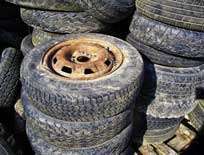
A Spanish Royal Decree “that will accelerate the transition of the end-of-life tyre (ELT) sector towards a model of circular economy” has been approved by the Council of Ministers, on the proposal of the Ministry for the Ecological Transition and the Demographic Challenge (MITECO).
Among other issues, the new law includes all tyres over 1,400mm and prohibits landfilling of large tyres, an issue that has been allowed until now. It also prioritises the reuse of tyres and further defines the conditions that both second-use tyres and retreaded tyres must meet for their subsequent sale.
Likewise, the standard also details the information that must be provided about the tyres to the consumer, which preferably will be delivered electronically.
It is expected that the Decree will result in greater control and traceability of management of ELTs, which will help to avoid its accumulation and, ultimately, improve the protection of the environment.
The norm states that producers are obliged to manage the tyres as many times as necessary until their complete recovery, including the management of the tyre if it is sold as a second-hand or retreaded product. However, the Decree extends the definition of tyre producer to those manufacturers of retreaded tyres in Spain on imported casings, and to importers of second-hand or retreaded tyres, which makes them subjects of expanded responsibility for ELT management.
Producers can channel this management obligation through the collective liability systems, which manage the collection and recovery of used tyres in Authorised Treatment Centres (CAT) or similar facilities.
All tyre producers will also be logged in the Product Producers Registry, where they must lay out their details at the time of their registration, and the information that they must report annually on the quantities and types of tyres they introduce into the national replacement market.
Lastly, the Decree regulates “the exceptional procedure for collecting ELTs at the collection points” as well as the relationship between the collection points and the producers to pay for the collection and treatment of the tyres, in order to solve operational problems. The resulting information in the treatment of waste will be used to provide greater transparency to the management system for ELTs.
